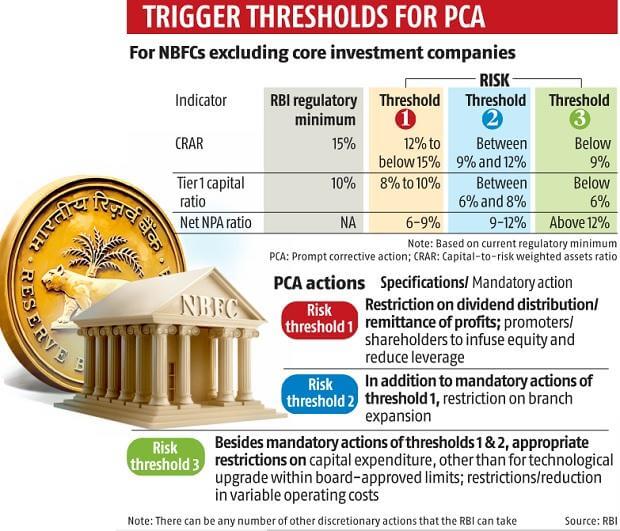
Current Affairs for UPSC Civil Services Exam – May 30, 2024
Subscribers of "Current Affairs" course can Download Daily Current Affairs in PDF/DOC
Subscribe to Never Miss an Important Update! Assured Discounts on New Products!
Must Join PMF IAS Telegram Channel & PMF IAS History Telegram Channel
{GS1 – Geo – PG – Climatology} Why do temperatures vary within the same city?
- Context (IE): Different parts of Delhi have varying temperatures due to human activities.
Reasons for Temperature Variation
- Material used: Hard, dry surfaces like pavements and buildings increase temperature. Concrete holds more heat (2000 times than air).
- Geometry and spacing of buildings: Dense buildings create “large thermal masses” that trap heat. Narrow streets and tall buildings obstruct cooling wind flows.
- Human behaviour: Air conditioners release heat, raising local temperatures.
{GS1 – Geo – PG – Geomorphology} Volcano eruption in Iceland *
- Context (TH): A volcano in southwestern Iceland, near Grindavik, erupted on Wednesday for the fifth time since December. The eruption began in the early afternoon following a series of earthquakes.
- This was the most vigorous eruption so far. Lava shot 50 meters (165 feet) into the sky. It created a fissure that was estimated to be more than 3.5 KM (2.1 miles).
- The nearby Blue Lagoon, Iceland’s biggest tourist attraction, known for its turquoise (light greenish-blue colour) waters, had evacuated its facilities.
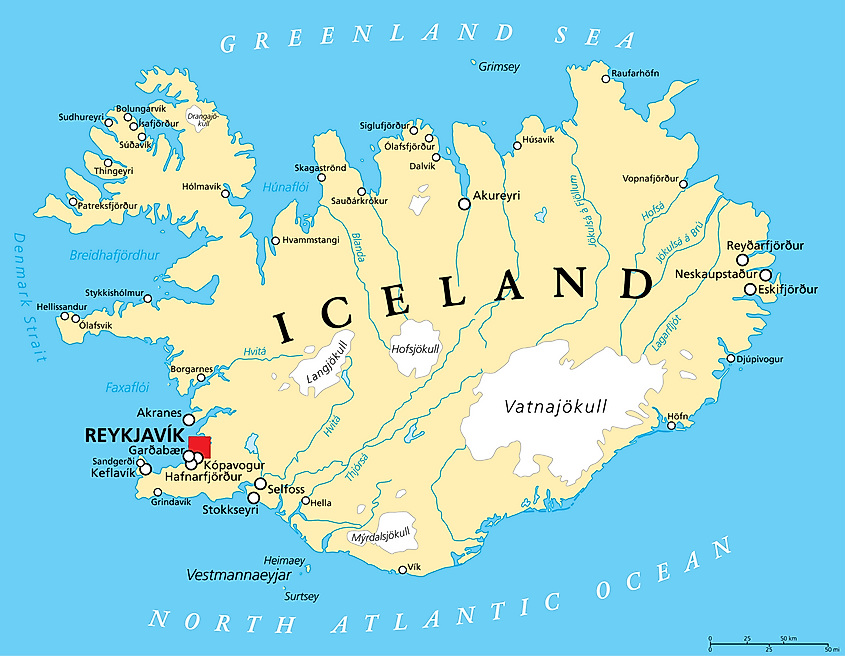
Credit: worldatlas
{GS2 – Governance – Laws} Big techs oppose India’s EU-like Antitrust proposal
- Context (IE): Google, Amazon, Apple lobby group opposes India’s EU-like antitrust proposal.
- The U.S.-India Business Council (USIBC), part of the U.S. Chamber of Commerce, has also asked India to reconsider the planned law.
- They argue that regulations against data use and preferential treatment of partners could raise user costs.
- As in the EU, it recommends a penalty of up to 10% of a company’s annual global turnover for violations.
- India’s “Digital Competition Bill” is on the lines of the EU’s landmark Digital Markets Act 2022.
- Indian startups have supported the new Indian law, saying it can help address monopolistic practices of dominant digital platforms.
To know more, visit > Digital Competition Bill.
{GS2 – IR – UN} 76th International Day of UN Peacekeepers
- Context (PIB): The Indian Army commemorated the 76th International Day of UN Peacekeepers at the National War Memorial, New Delhi.
UN Peacekeeping
- UN peacekeepers provide security, political and peacebuilding support to help countries make the difficult, early transition from conflict to peace.
- There are currently 11 UN peacekeeping operations deployed on three continents.

Credits: UN Peacekeeping
- The UN Peacekeeping forces were awarded the Nobel Prize for Peace in the year 1988.
- Capstone Doctrine covers the basic principles and key concepts related to UN peacekeeping.
Role of Peacekeeping operations include
- Maintaining peace and security;
- Facilitate the political process, protect civilians;
- Assist in the disarmament, demobilisation and reintegration of former combatants;
- Support the organisation of elections;
- Protect and promote human rights;
- Assist in restoring the rule of law.
Three basic principles of UN Peacekeeping
- Consent of the parties;
- Impartiality;
- Non-use of force except in self-defence and defence of the mandate.
International day of peacekeeping
- On this day in 1948, the first UN Peacekeeping Mission, the UN Truce Supervision Organisation (UNTSO), began operations in Palestine.
- Theme 2024: ‘Fit for the future, building better together’, towards creating an equitable, just, and sustainable world for all.
- On the same day, the Dag Hammarskjold Medal will be awarded posthumously to fallen peacekeepers.
Dag Hammarskjold Medal
Captain Mbaye Diagne Medal
|
India and Peacekeeping
UN Military Observer Group In India And Pakistan (UNMOGIP)
- Appointed by the UN Secretary-General based on the U.N. Security Council Resolution 39 of January 1948 that set up the U.N. Commission for India and Pakistan (UNCIP).
- Arrived on 24 January 1949 to supervise the ceasefire between India and Pakistan in Jammu & Kashmir, as permitted by the Karachi Agreement of July 1949.
- Following renewed hostilities of 1971, UNMOGIP has remained in the area to observe the ceasefire.
- HQ: Srinagar (May to October) and Islamabad (November to April)
- India officially maintains that the UNMOGIP’s role was “overtaken” by the Simla Agreement of 1972 that established the Line of Control(LoC).
- Pakistan continues to seek cooperation from the UNMOGIP.
India as contributor
- India is one of the largest contributors. Indian Armed Forces are deployed in nine peacekeeping missions: UNDOF, UNIFIL, UNTSO, UNFICYP, MONUSCO, UNMISS, UNIFSA, MINUSCA, and MINURSO.
- The Indian Army has established a Centre for UN Peacekeeping (CUNPK) in New Delhi to impart niche training in peacekeeping operations.
- In support of the UN’s gender parity drive and Nari Shakti initiative, India has deployed Female Engagement Teams (FETs) in the Democratic Republic of Congo and Abyei (the second-largest Indian women contingent after Liberia). India has also deployed women military police in Golan Heights.
- Recognising the contributions, Major Radhika Sen was awarded “Military Gender Advocate of the Year 2023” by the UN Headquarters.
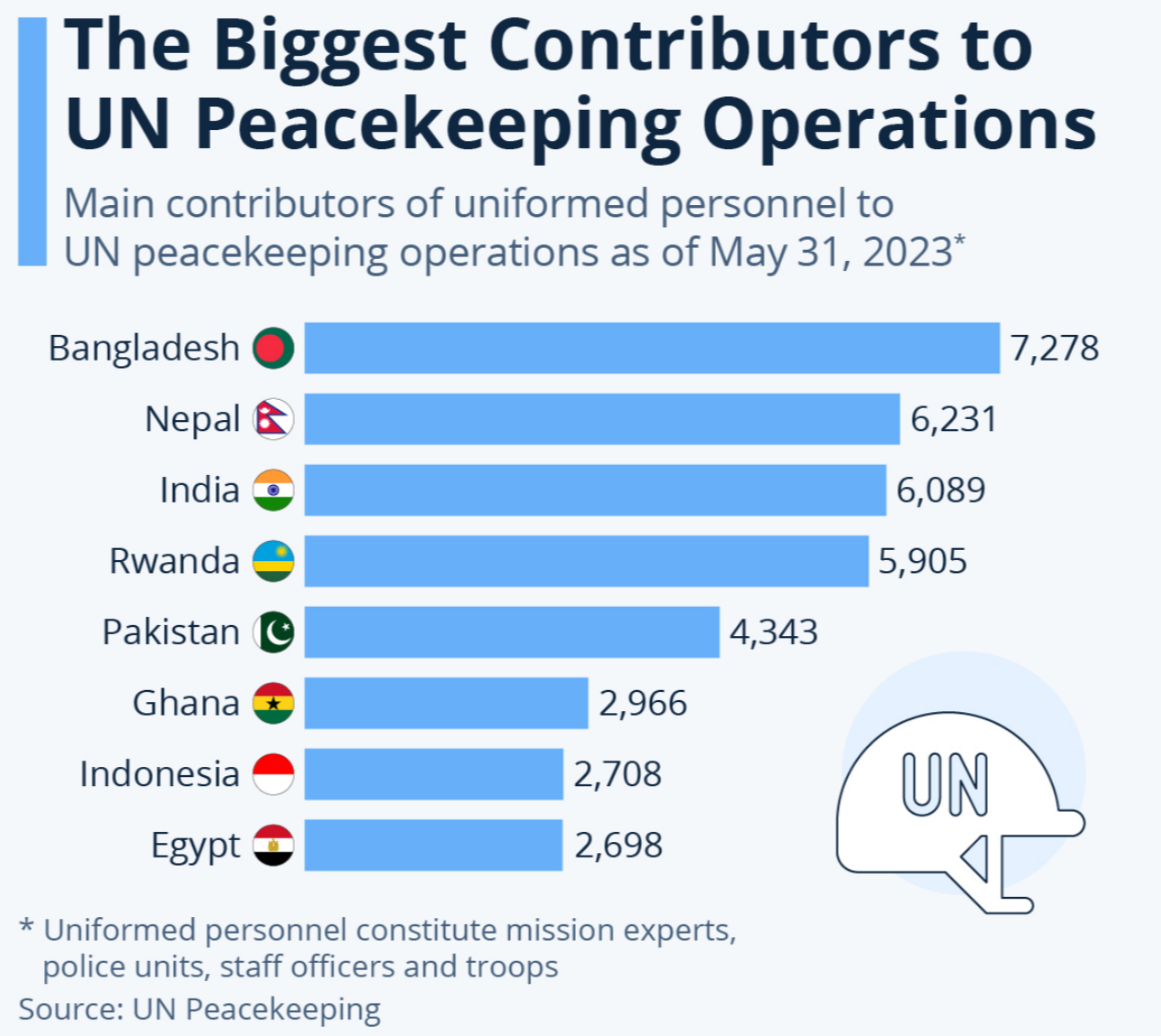
Credits: UN Peacekeeping
{GS2 – MoAy – Initiatives} PRAGATI 2024
- Context (PIB): The Central Council for Research in Ayurvedic Sciences (CCRAS) launched “PRAGATI– 2024” (Pharma Research in AyurGyan And Techno Innovation).
- Objective: To explore research opportunities and foster collaboration between CCRAS and the Ayurveda drug industry.
- It will provide a platform for collaboration and research that will eventually lead to the growth and advancement of the sector.
Central Council for Research in Ayurvedic Sciences (CCRAS)
- It an autonomous body under the Ministry of Ayush.
- It is an apex body in India for the formulation, coordination, development and promotion of research on scientific lines in Ayurveda and Sowa-Rigpa system of medicine.
- The activities are carried out through its 30 Institutes/Centres/Units located all over India and also through collaborative studies with various Universities, Hospitals and Institutes.
{GS2 – Polity – IC – Judiciary} Can Judges have political affiliations? **
- Context (IE): A retiring judge of Calcutta HC said in his farewell speech that he was, and is, a member of the Rashtriya Swayamsevak Sangh (RSS).
Political Affiliation and Judges Appointment in India
- Prior to the 1970s, a judicial candidate’s political ideology was not a major concern in the judicial appointments process.
- This changed after Indira Gandhi’s government suffered setbacks in the SC in the Golak Nath, bank nationalisation, and privy purse cases.
- Mr. Kumaramangalam, a minister in Indira gandhi’s cabinet and former advocate general of Madras state, played a pivotal role in shaping the process.
- He openly advocated the doctrine that the ideology of judges must be considered while determining their fitness for appointment to the SC.
- In 1982 and 1985, the CJI recommended Justice Chandurkar for the SC, but the GOI opposed, citing his ties to the RSS. The PM said, “My party thinks he’s not good” and “unlikely to help the GOI.”
- Since the 1990s, SC and HC appointments have been made by the Collegium system. Judges in India are presumed neutral and avoid overt political affiliations.
- In 2023, controversy arose when lawyer Lekshmana Chandra Victoria Gowri, a former BJP women’s wing secretary, was appointed as a Madras HC judge.
- Twenty-one lawyers objected, but others argued her conduct after elevation mattered, not her past affiliation. The SC dismissed the petition, stating courts should not assess suitability.
Global Examples
United Kingdom
- Judges in the UK are selected by a process that prioritises merit and experience over political affiliation.
- The system relies on senior members of the judiciary and others who are acquainted with the judiciary.
- Judges in the UK are expected to avoid any appearance of political ties, e.g., by attending political gatherings, political fundraising events, contributing to political parties etc.
- They are also expected to not participate in public demonstrations which would associate them with a political cause, diminish their authority, and cast doubt on their independence.
- Judges are prohibited from running for Parliament under the House of Commons (Disqualification) Act, 1975.
United States of America
- The American system places judicial appointments in the hands of politicians.
- The President appoints judges to the higher judiciary, and the appointments are confirmed by the United States Senate in what is most often a partisan vote.
- US judges serve for life and have well-known political positions that may be conservative or liberal.
- The 1990 American Bar Association Model Code prohibits judges from political activity except to improve the law, legal system, or justice administration.
- The 2007 model code provides that a judge “shall not engage in political activity that is inconsistent with the independence, integrity, or impartiality of the judiciary”.
Singapore
- Judges must ensure their associations with the Legislature or Executive do not compromise their independence or create an appearance of bias.
- Judges should avoid clubs or associations linked to political parties and not hear cases where their impartiality could be questioned due to their family’s political activity or affiliation.
Australia
- Although prior political party membership doesn’t justify bias allegations, judges are expected to sever all political ties upon appointment.
- Publicly-aired opinions indicating a bias can be grounds for disqualification of a judge.
- Giving the appearance of continuing ties by attending political gatherings, political fundraising events, or through contributions to a political party should be avoided.
{GS3 – Envi – UNFCCC} $100 billion climate finance achieved
- Context (DTE): According to an Organisation for Economic Cooperation and Development (OECD) report, $115.9 billion was allocated to developing countries in 2022 to support climate action.
- It occurred two years later than the original 2020 target year, though earlier than expected in 2025.
- In 2009, at COP15 in Copenhagen, developed countries committed to a goal of raising $100 billion a year by 2020 to address the needs of developing countries
- The same was reiterated by Article 9 of the Paris Agreement adopted in 2015.
Observations of report
- The OECD report noted that public climate finance, drawn from bilateral (country) and multilateral sources (like the World Bank), accounted for close to 80 per cent of the total financial flow in 2022.
- This figure increased from $38 billion in 2013 to $91.6 billion in 2022.
- Private finance grew from $14.4 billion in 2021 to $21.9 billion in 2022, a 52 per cent jump.
- The energy sector benefited the most from private mobilisation in 2022, and middle-income countries received the most investments.
- However, lower-income countries received 64 per cent of total public climate finance as grants, while lower-middle-income countries received only 13 per cent as grants.
Concerns underlined in the report
- Loans make up 70 per cent of the financial flow, which may push developing countries into a debt trap.
- Much of the funding is repackaged as loans rather than grants and is often intertwined with existing aid.
- Most climate finance went to mitigation. Adaptation activities received $32.4 billion in 2022.
- The $100 billion goal is not based on the needs of developing nations; more needs to be done.
Way forward
- Nations are negotiating a New Collective Quantified Goal on Climate Finance, with a floor of $100 billion, to replace the earlier climate pledge by 2025.
{GS3 – S&T – Discovery} New process discovered to detect viral infections
- Context (TH): Harvard University and Jiangsu University researchers have developed a tool to detect viral infections using light and basic physics.
Mechanism of Detection
- Viral infections change cell shapes, sizes, and features. The researchers behind the new study translated these cellular changes into patterns that could be used to say if a cell had been infected.
Research Process
- Infected pig testicle cells with pseudorabies virus. Showed light on cells through a microscope.
- Tracked light distortions caused by cellular changes. Compared light distortions from infected and healthy cells. Differences in light patterns indicated virus-infected cells.
Findings
- Virus-infected cells were elongated and had clearer boundaries than uninfected cells. This changed the contrast between the light and dark stripes of the diffraction fingerprint.
Advantages
- It can detect viral infections more accurately than the standard method. For example, the standard method uses chemical reagents (dimethyl thiazolyl diphenyl tetrazolium bromide). Enzymes in cells react with the reagent to produce purple formazan crystals. Cells dying of a viral infection lack these enzymes and thus produce little to no amounts of formazan crystals.
- Cheaper: Standard method: Equipment costs about $3,000 (Rs 2.5 lakh). New method: Costs about a tenth of the standard method.
- Time: Standard method: It takes about 40 hours. New method: It takes about 2 hours.
- Useful for detecting viral infections in livestock and pets. Helps in the selection and breeding of livestock and poultry species. Useful during virulent outbreaks like bird flu.
{GS3 – S&T – Discovery} Researchers find genetically altered Nidoviruses *
- Context (WION): Crossbreeding between different viruses can create new, altered viruses. These new viruses It has the potential to trigger COVID-19-like pandemic.
- Discovery: Using a new computer-assisted analysis method, scientists discovered 40 previously unknown nidoviruses in various vertebrates, from fish to rodents, including 13 coronaviruses.
Genetic Recombination
- New viruses can emerge when host animals are infected with different viruses simultaneously.
- Genetic material exchanged between virus species, even across family boundaries.
- More radical evolution occurs when viruses from different families interact.
- It can lead to fatal and dangerous diseases in host animals.
Examples in Nature
- Genetic exchange found in fish viruses. Likely to happen in mammalian viruses, too.
- Bats, which carry many viruses, are prime candidates for such processes.
- SARS-CoV-2: Suggested to have developed among bats due to crossbreeding processes
Nidoviruses
|
{GS3 – S&T – Space} Black holes beams
- These black holes swivel around and shoot beams at objects in the cosmos. These beams change directions in about a million years.
- These jets (beams) are composed of plasma particles supercharged by the magnetic field of black hole.
- Travelling at around light speed, they reach distances several light-years from their source.
- However, it is unclear whether the beam impacts existing planets and stars.
- Scientists examined erupting supermassive black holes using NASA’s orbiting Chandra X-ray Observatory and the Very Long Baseline Array (VLBA).
To know more, visit > Black Holes.
{GS3 – S&T – Tech} India’s first Quantum Diamond Microchip Imager
- Context (TH): The Indian Institute of Technology Bombay (IIT-Bombay) has entered a strategic partnership with Tata Consultancy Services (TCS) to develop India’s first Quantum Diamond Microchip Imager.
- The collaboration is aligned with National Quantum Mission.
- The Quantum Diamond microchip imager uses the defects in a diamond’s structure, known as Nitrogen-Vacancy (NV) centres, together with the other hardware and software for detecting and characterising anomalies in semiconductor chips.
- A quantum diamond microchip imager can image magnetic fields, enabling a non-invasive and non-destructive mapping of semiconductor chips, much like an MRI at a hospital.
Significance
- It will help reduce chances of chip failures and improve efficiency of electronic devices.
- It will enable better quality control of semiconductor chips, thereby improving product reliability, safety, and energy efficiency of electrical devices.
- It will detect anomalies posed by traditional sensing methods due to the shrinking size of semiconductors.
Learn in detail about Semiconductor manufacturing in India.
{Prelims – In News} Asia-Pacific Employment and Social Outlook 2024
- Context (ILO): The International Labour Organisation (ILO) released the Asia-Pacific Employment and Social Outlook 2024 report.
Key Findings
- Real GDP growth in the region is projected to fall to 4.2% in 2025 from 4.4 at present (2024).
- The region’s employment-to-population ratio is in long-term decline, projected to continue over the coming years, falling from 58.2 per cent in 2023 to 57.4 per cent in 2026.
- Increase in persons >65 years and above as a share of the total population and declining youth participation rate are the main causes of the long-term downward trend.
- Labour force participation rate (LFPR) fell from 67.0 per cent in 1991 to 60.9 per cent in 2023 and is projected to decline further over coming years.
- Increased educational attainment and ageing populations are among the main drivers.
- Unemployment rate stands at 4.2 per cent. Unemployment among women is lower than unemployment among men.
- In 2023, around 66% of workers were in informal employment.
- Dependency ratio (ratio of the population aged 65 and above to those aged 15 to 64) will double from 0.15 in 2023 to 0.31 in 2050. Further, it is rising faster in Asia and Pacific than in the rest of the world.
- The highest old-age dependency ratios are mostly likely to be seen in Japan and South Korea, with the largest increases expected in South Korea, Singapore and Thailand.
- The report called for significant policy reforms and better implementation of existing standards to reduce inequalities, improve job prospects for older workers and ensure equitable pensions to address the demographic changes.
{Prelims – In News} Kavango-Zambezi Trans-Frontier Conservation Area
- Context (DTE): More than 400 delegates gathered in Livingstone for the inaugural Kavango-Zambezi (KAZA) Trans-Frontier Conservation Area (TFCA) summit.
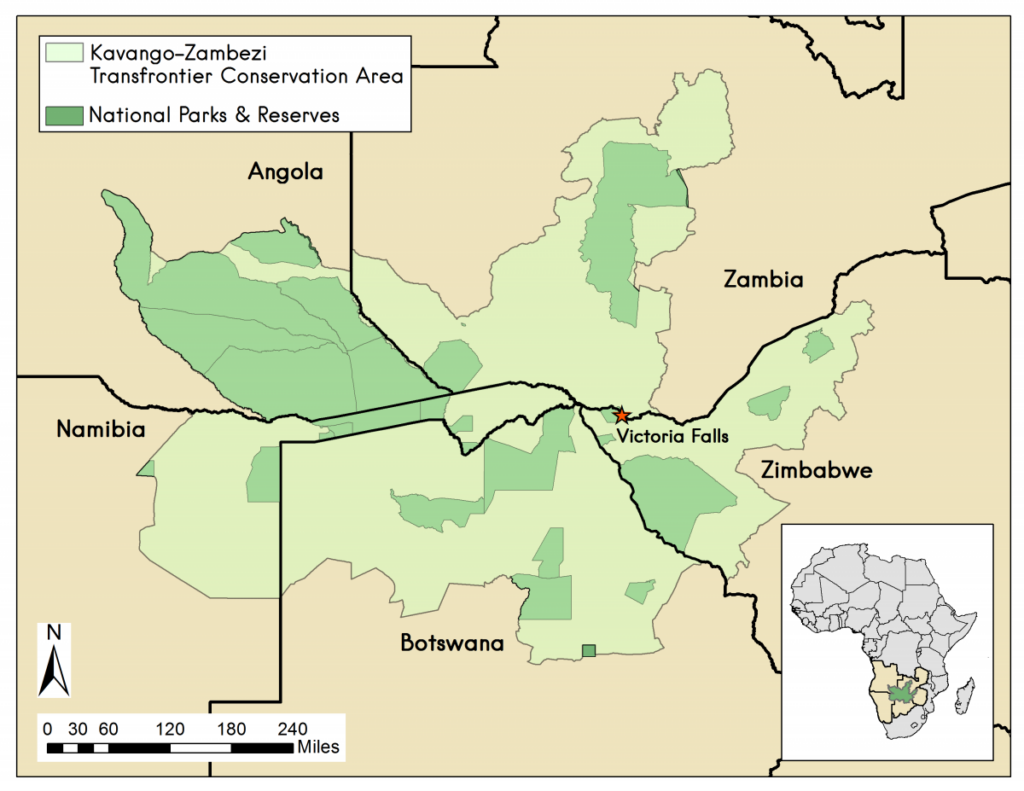
Credit: School of Global Environmental Sustainability
- The Kavango Zambezi Trans-Frontier Conservation Area (KAZA TFCA) is Africa’s largest conservation landscape and the world’s largest transfrontier conservation area.
- It lies in the Kavango and Zambezi river basins where Angola, Botswana, Namibia, Zambia and Zimbabwe converge.
- Within it are three World Heritage sites namely:
- The Victoria Falls on the Zambezi river which makes the border between Zambia and Zimbabwe.
- The Okavango Delta (Botswana).
- Tsodilo Hills (Botswana).
- It hosts the largest contiguous population of African elephant and is a key conservation area for threatened species such as the lion, cheetah, and African wild dog.
- The KAZA-TFCA area is a partnership centred around “a common vision to conserve biodiversity at scale through promoting integrated transboundary management and to market the landscape biodiversity using nature-based tourism as the engine for rural economic growth and development.”
|
{Prelims – PIN India} Vivekananda Rock Memorial
- Context (IE): PM will meditate at the Vivekananda Rock Memorial in Kanyakumari, Tamil Nadu.
- The Vivekananda Rock is a tiny rocky islet located some 500 metres from Kanyakumari’s Vavathurai beach, the southern tip of mainland India, at the confluence of Indian Ocean, Arabian Sea and Bay of Bengal.
- The Memorial has spiritual significance since Swami Vivekananda, after wandering across the country, is believed to have meditated here for three days and had attained enlightenment.
- It is situated on one of the two adjacent rocks projecting out of the Lakshadweep Sea and comprises of the ‘Shripada Mandapam’ and the ‘Vivekananda Mandapam’.
- Vivekananda’s Rock also holds religious significance to the locals. It is believed that Goddess Devi Kumari blessed the rock while performing austerity.
{Prelims – S&T – Defence} RudraM-II
- Context (PIB): DRDO successfully flight-tested the RudraM-II from the Su-30 MK-I platform.
- Objectives: Validated propulsion system and control & guidance algorithm.
Features of RudraM-II
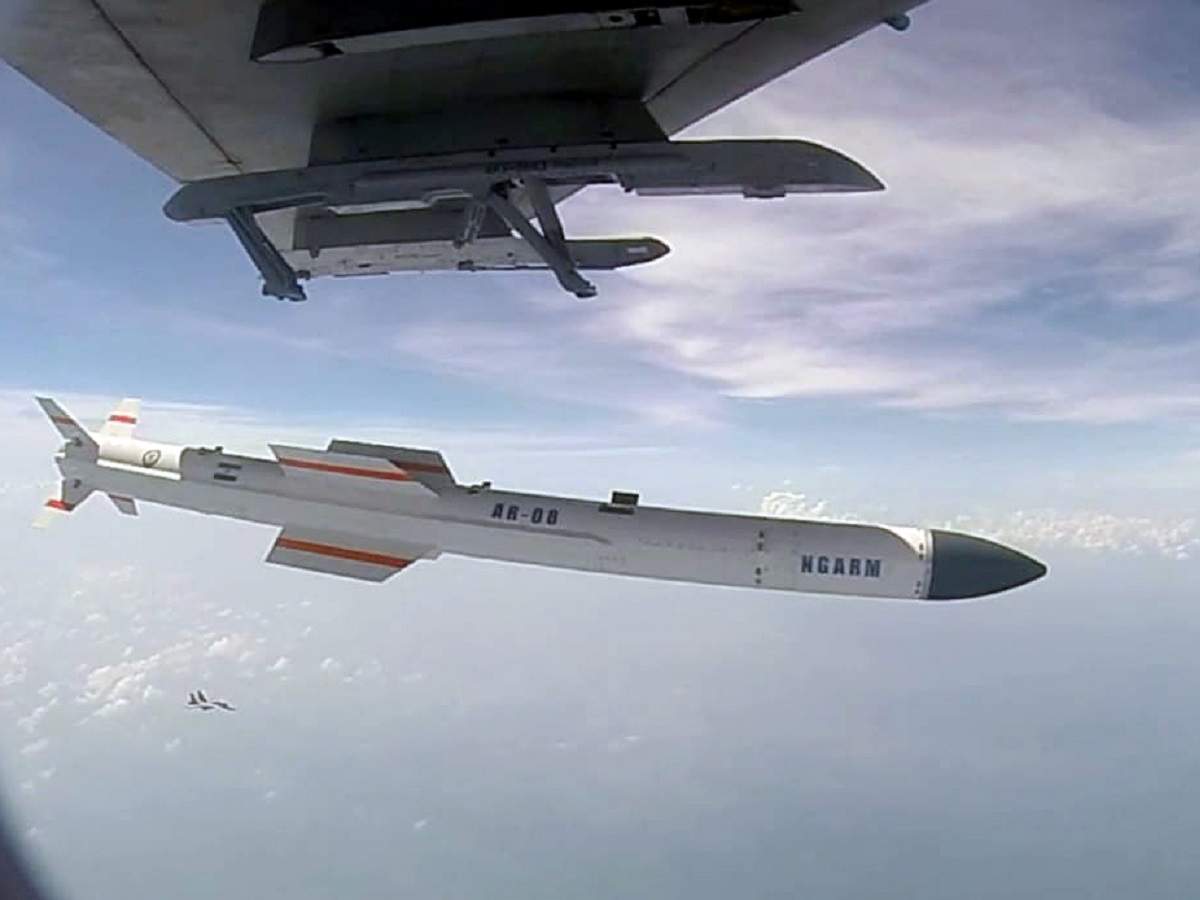
Credit: Bangaloremirror
- Indigenously-developed, solid-propelled, Air-to-surface, anti-radiation missile system.
- Anti-radiation missiles are designed to detect radio frequencies emitted from radar systems. Their main goal is to neutralise enemy radar communication.
- Range: 300 KM ; Speed: Up to Mach 5.5 ; Payload: 200 kilogramme.
|







![PMF IAS Environment for UPSC 2022-23 [paperback] PMF IAS [Nov 30, 2021]…](https://www.pmfias.com/wp-content/uploads/2024/04/pmfiasenvironmentforupsc2022-23paperbackpmfiasnov302021.jpg)



